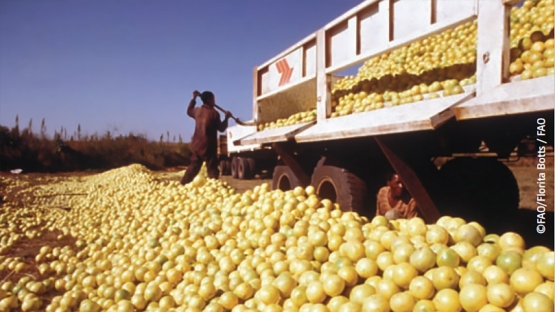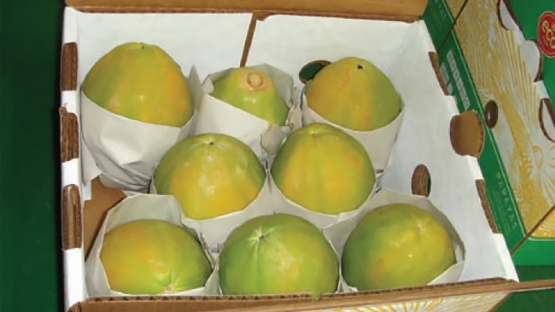Until recently, fruit flies in a 38 000 ha area of southern Peru caused annual production losses of US $12 million. Now, through the integrated application of a technique that uses ionizing radiation to sterilize large numbers of the insects, the area is free of the pests. This sterile insect technique (SIT) has meant improved incomes for 18 000 producers, safe and better quality food for trade, and has eliminated the annual use of 600 000 litres of pesticides.
The SIT, often referred to as a form of “birth control for insects”, has been applied successfully against a range of devastating fruit flies – insects that have a greater impact on world trade in agricultural products than almost any other pest. They attack fruits and vegetables, reducing local consumption of healthy fruits and vegetables and causing major economic losses in a majority of horticultural crops. Their economic consequences are so great that countries free of the major fruit fly species prohibit the import of fresh produce from countries where these pests are endemic or have been introduced, which can include both tropical and temperate countries in the developing world.
Tropical and temperate countries are well situated to export fruits and vegetables but, because importing countries refuse to take products from countries with fruit flies, they pose a significant barrier to trade. It is a vicious cycle – when importing countries ban the products, exporting countries stop growing them because they would have no market because of the international restrictions.
However, the integrated application of the SIT to develop low prevalence or pest-free areas can break the cycle. When exporting countries and the private sector see that the pest can be suppressed and the product accepted by importers, then they will invest in developing a competitive horticultural industry. Thus, the creation of low prevalence and fly-free areas with the SIT helps countries overcome trade barriers.



